Page 1 of 1
December 2018
Posted: Sun Dec 02, 2018 2:44 pm
by millerd
One fly-by Red Admiral and one settled Comma seen at lunchtime today in warm sunshine on my local patch near Heathrow.
Dave
Re: December 2018
Posted: Sun Dec 02, 2018 6:41 pm
by David M
Amazing, Dave. Whilst it is mild here in Swansea any breaks in the cloud seem to be accompanied by strong winds making butterfly sightings all but impossible.

Re: December 2018
Posted: Tue Dec 04, 2018 1:48 pm
by peterc
Today, I came across what looks a Purple Hairstreak egg which has been parasitised on oak on the southern edge of Watery Grove. I hope to obtain better photos in the days ahead

.
ATB
Peter
Re: December 2018
Posted: Wed Dec 05, 2018 2:18 pm
by Vince Massimo
Yesterday, 4th December, I again visited the seafront at Lancing to check on Large White pupae on the shingle barrier. The total since the last report a month ago has now risen to 13 pupae (including the one discovered by Bugboy at the eastern end).
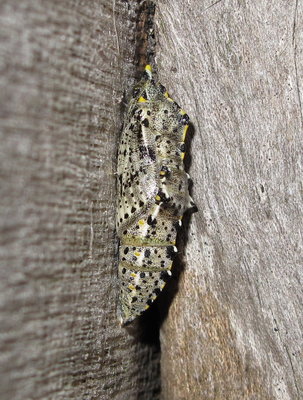
- Large White pupa (L10) - Lancing, Sussex
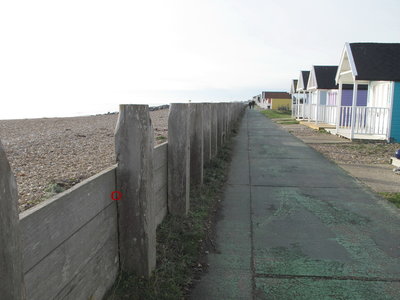
- Large White pupa context (L10) - Lancing, Sussex 4-Dec-2018
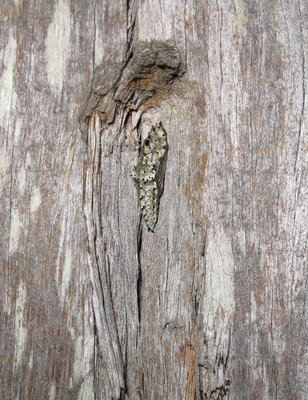
- Large White pupa (L8) - Lancing, Sussex
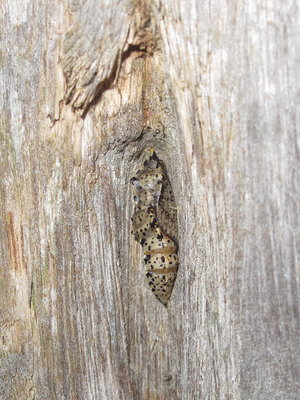
- Large White pupa (L12) - Lancing, Sussex
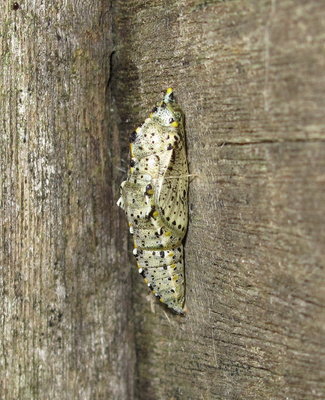
- Large White pupa (L1) - Lancing, Sussex
Then on to nearby Mill Hill, where I checked on a marked Clouded Yellow egg (laid on 14th November) and found that it had changed colour and was developing slowly.
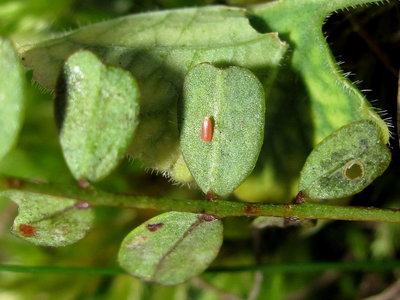
- Clouded Yellow egg - Mill Hill, Sussex 4-Dec-2018
On the way back there was a Red Admiral in Shoreham.
Vince
Re: December 2018
Posted: Thu Dec 06, 2018 9:16 pm
by David M
Fabulous, Vince, although given how mild it's been lately I'm not surprised there have been butterflies active.
Re: December 2018
Posted: Fri Dec 21, 2018 9:31 am
by peterc
On the same oak branch where I found some Purple Hairstreak eggs earlier in the month was what looked like a moth pupa - does anyone recognise it? I have tried to get a positive id from various people but with no success yet.
While I am at it, I wish everyone here a Merry Christmas and a fantastic butterflying year in 2019.
ATB
Peter
Re: December 2018
Posted: Sat Dec 22, 2018 1:10 pm
by peterc
Following on from yesterday's message for the pupa I returned to the site this morning and it appears that the pupa has now hatched - see photo below. I didn't realise until I got home and looked at the images that there is a 'moth' beside the pupal case. I still haven't got a clue what it is - can anyone help? By the way, the pupal case and the 'moth' are about 1 cm long
ATB
Peter
Re: December 2018
Posted: Sun Dec 23, 2018 2:38 pm
by skiking
Amazingly, I've somehow got what looks like a red admiral flying around the house. Didn't know they would be alive at this time of year. No idea where it has come from.
What do I do with it. Its wet and cold outside but its also going to die indoors.
Re: December 2018
Posted: Sun Dec 23, 2018 7:24 pm
by Maximus
It needs to be in a cool dark place, away from central heating, so that it can continue it's hibernation until Spring.
Re: December 2018
Posted: Sun Dec 23, 2018 7:40 pm
by David M
Personally, I don't think you can induce diapause in a Red Admiral. Although it might seem cruel, I believe your best chance to help it survive is to release it on a mild winter morning at about 10.30am (preferably when the sun is occasionally shining).
It will then be able to do what comes naturally to it, i.e. continue to feed and be active when conditions suit and to hunker down should we get a cold spell.
All the better if you can do this in an area where there are still a few nectar bearing plants.
Re: December 2018
Posted: Sun Dec 23, 2018 7:49 pm
by Maximus
You're probably right, David.
Re: December 2018
Posted: Sun Dec 23, 2018 11:13 pm
by MrSp0ck
When We have had Red Admiral adults, they go in and out of hibernation even when kept in the dark, it seems they do a week or so, then feed and go back into light hibernation, they seem to do this in the wild too, hence all the regular winter sightings even on Jan 1st. A local passionflower is in bud, so there are food sources even at this time of year.
Re: December 2018
Posted: Mon Dec 24, 2018 12:15 am
by Essex Bertie
Peterc,
I think your moth/pupa might be an Acleris species. Acleris ferrugana being a common oak species. Although it overwinters as an adult, Ukmoths suggests it emerges in the autumn, so I'm not sure
Rob
Re: December 2018
Posted: Sat Dec 29, 2018 11:34 am
by peterc
Essex Bertie wrote:Peterc,
I think your moth/pupa might be an Acleris species. Acleris ferrugana being a common oak species. Although it overwinters as an adult, Ukmoths suggests it emerges in the autumn, so I'm not sure
Rob
Thanks for your suggestion, Rob and sorry I didn't reply sooner.
I returned to the spot yesterday and the pupal case and 'moth' are no longer there.
ATB
Peter
Re: December 2018
Posted: Mon Dec 31, 2018 4:15 pm
by Essex Bertie
Hi Peter,
After I posted, I had a look on a European leps website and found some photos of Acleris species' pupae. They all seemed to be attached to a leaf, rather than the branch stem, which obviously casts doubt on my suggestion! I'll just broaden it to 'a micro-moth' and not dig any deeper.
Happy New Year,
Rob